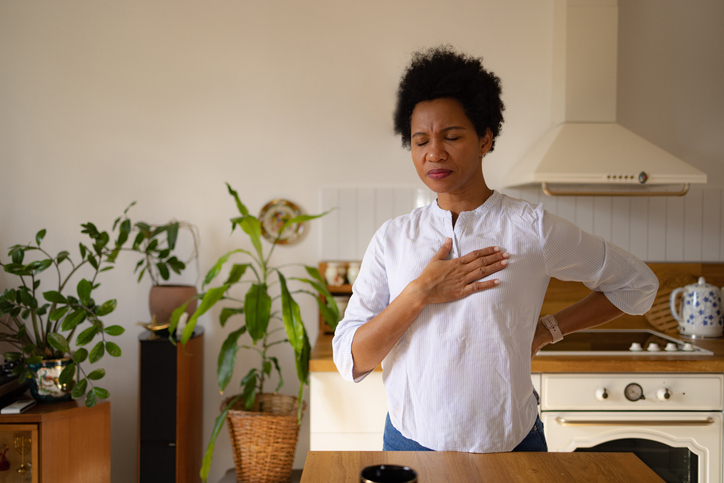When it comes to heart attacks and strokes, time is critical—but so is awareness. For too long, the medical community and the general public have largely viewed these conditions through a male-centered lens, overlooking the fact that women often experience different, subtler symptoms.
This misunderstanding can lead to delayed treatment, misdiagnosis, and poorer outcomes for women. Recognizing the unique ways cardiovascular events present in women isn’t just a matter of equity—it’s a matter of saving lives.
Here, Dr. Phil Chapman, emergency department physician at Riverside Healthcare, offers helpful information for women—so they can be better prepared should a heart attack or stroke hit.
Getting Past the “Typical” Heart Attack Symptoms
A heart attack occurs when blood flow to part of the heart is blocked, depriving the heart muscle of oxygen and potentially causing permanent damage. Although the heart’s main role is to pump blood to the body, it also needs its own blood supply to function. Without it, the heart can't effectively support the rest of the body, leading to widespread complications.
In terms of symptoms, doctors categorize them as typical—like chest pain—and atypical, which are less common signs. While women are more likely than men to experience atypical symptoms, such as fatigue, nausea, or jaw pain, it’s still most common for women to present with the classic chest pain during a heart attack. However, chest pain can arise from circumstances other than a heart issue.
“Don't think every discomfort in your chest is a heart attack,” states Dr. Chapman. “But, it's also important to know that just because you’re not experiencing that classic crushing chest pain, doesn't mean it's not a heart attack. If you are having new and unusual symptoms, especially if they're related to exertion, meaning that every time you walk up a flight of stairs you get indigestion or you experience nausea when walking to the mailbox, that might be a heart attack waiting to happen.”
Common Stroke Symptoms—and Stroke’s Impact on the Body
For strokes, symptoms are typically more focal, depending on which part of the brain is affected. Common signs include weakness on one side of the body, facial drooping, or difficulty speaking. One of the harder types of strokes to recognize affects the balance center of the brain, sometimes presenting as severe dizziness or vertigo.
While vertigo is usually not stroke-related, it can be in rare cases. Overall, stroke symptoms are usually localized to specific areas of function rather than affecting the body globally.
The Hormone/Heart Attack Connection
Hormonal changes, such as those that occur during menopause or pregnancy, can influence a woman's risk of heart attack or stroke. While the research isn't entirely definitive, it's widely believed that estrogen has a protective effect against heart disease. As estrogen levels decline during menopause—especially in cases of early menopause (before age 45)—the risk of developing heart disease appears to increase.
“Rest assured, this does not mean that if you do go through early menopause, you're going to have a heart attack. It's just that you are at a higher risk than somebody who did not,” notes Dr. Chapman.
Never Delay Care—Always Make Your Health a Priority
Perhaps the most important takeaway Dr. Chapman offers is for women to not delay care if they suspect they are either experiencing heart attack or stroke symptoms or at a high risk for developing those events. Women tend to put others first, before themselves, but that can definitely lead to undesirable outcomes.
“The data says that yes, women delay in seeking care. Instead of seeing their primary care physician, they put it off. Then, years go by and when they do need some kind of an intervention, it’s much further advanced than it would have been in a male counterpart,” cautions Dr. Chapman. “In that case, you might need more aggressive forms of treatment.”
